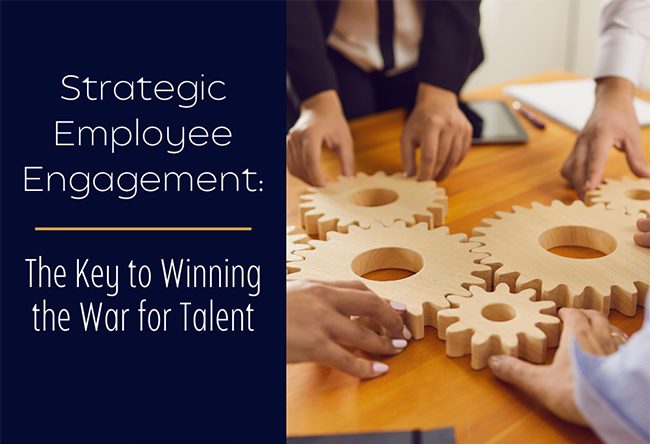The Key to Winning the War for Talent

In my decades of working with CEOs and senior leaders, one challenge consistently rises to the top of their concerns: retaining top talent. The numbers tell the story – with the Bureau of Labor Statistics reporting 43,000 jobs added in January 2025, which was similar to the average monthly gain of 166,000 new jobs in 2024, the competition for talent has never been fiercer. As we navigate an evolving workplace landscape shaped by retiring Baby Boomers and the rise of remote work, leaders must adapt their approach to employee engagement or risk losing their best people.
Here’s what I’ve learned from working with hundreds of organizations: throwing money at the problem isn’t the answer. While competitive compensation matters, the organizations winning the war for talent are those that understand the fundamental human need for connection, purpose, and belonging.
The Missing Piece: Human Connection
In our executive coaching practice, we frequently encounter leaders who are puzzled by high turnover despite offering attractive compensation packages and benefits. The reality? Recent McKinsey research reveals that 46% of employees leave their jobs due to a lack of supportive relationships at work. This statistic shouldn’t surprise us – we’re hardwired for connection.
Let me share a story from one of my clients, a fast-growing tech company struggling with retention. Their initial response was to increase salaries and add more perks. The result? Minimal impact on turnover. When we dug deeper, we discovered a disconnected culture where team members felt like cogs in a machine rather than valued contributors to a shared mission.
Building a Connection-First Culture
Based on my experience working with successful organizations, here are the strategies that actually move the needle on engagement and retention:
1. Revolutionize Your Leadership Approach
Leadership isn’t about status updates and performance metrics— it’s about creating genuine human connections. I advise my clients to institute regular one-on-ones that go beyond project updates. Ask about career aspirations, personal challenges, and growth opportunities. These conversations build trust and demonstrate genuine investment in your people’s success.
2. Transform Your Onboarding Experience
First impressions matter enormously. The organizations I work with that have the highest retention rates treat onboarding as a months-long journey rather than a one-week orientation. They pair new hires with mentors, schedule regular check-ins with leadership, and create opportunities for social connection from day one.
3. Empower Your Middle Managers
Your front-line managers are the key to employee engagement. I’ve seen organizations transform their retention rates by investing in manager development programs that focus on emotional intelligence, communication skills, and relationship building. Remember – people don’t leave companies; they leave managers.
Technology: The Connection Enabler
While technology isn’t a substitute for human connection, it can be a powerful enabler when used strategically. The most successful organizations I work with use digital tools to facilitate rather than replace human interaction. They leverage platforms that help managers track engagement patterns, remind them of important touchpoints, and identify team members who might be feeling disconnected.
The Path Forward
The talent shortage isn’t going away anytime soon, but it doesn’t have to derail your organization’s success. In my work with clients across industries, I’ve seen that organizations that prioritize human connection and engagement consistently outperform their peers in retention, productivity, and innovation.
As leaders, we have a choice: we can view the current talent landscape as a threat, or we can see it as an opportunity to build stronger, more resilient organizations through meaningful human connection. The organizations that thrive in the years ahead will be those that choose the latter path.
Remember, in today’s competitive talent market, culture isn’t just a nice-to-have – it’s your most powerful competitive advantage. By focusing on building genuine connections and fostering an environment where people feel valued, supported, and engaged, you’ll not only retain your top talent but attract the best new talent as well.
The choice is yours. What kind of organization do you want to build?
Chuck Mollor is the CEO and founder of MCG Partners, a leadership consulting firm specializing in leadership, culture, and talent optimization. He is also the author of his best-selling book, “The Rise of the Agile Leader: Can You Make the Shift?“

